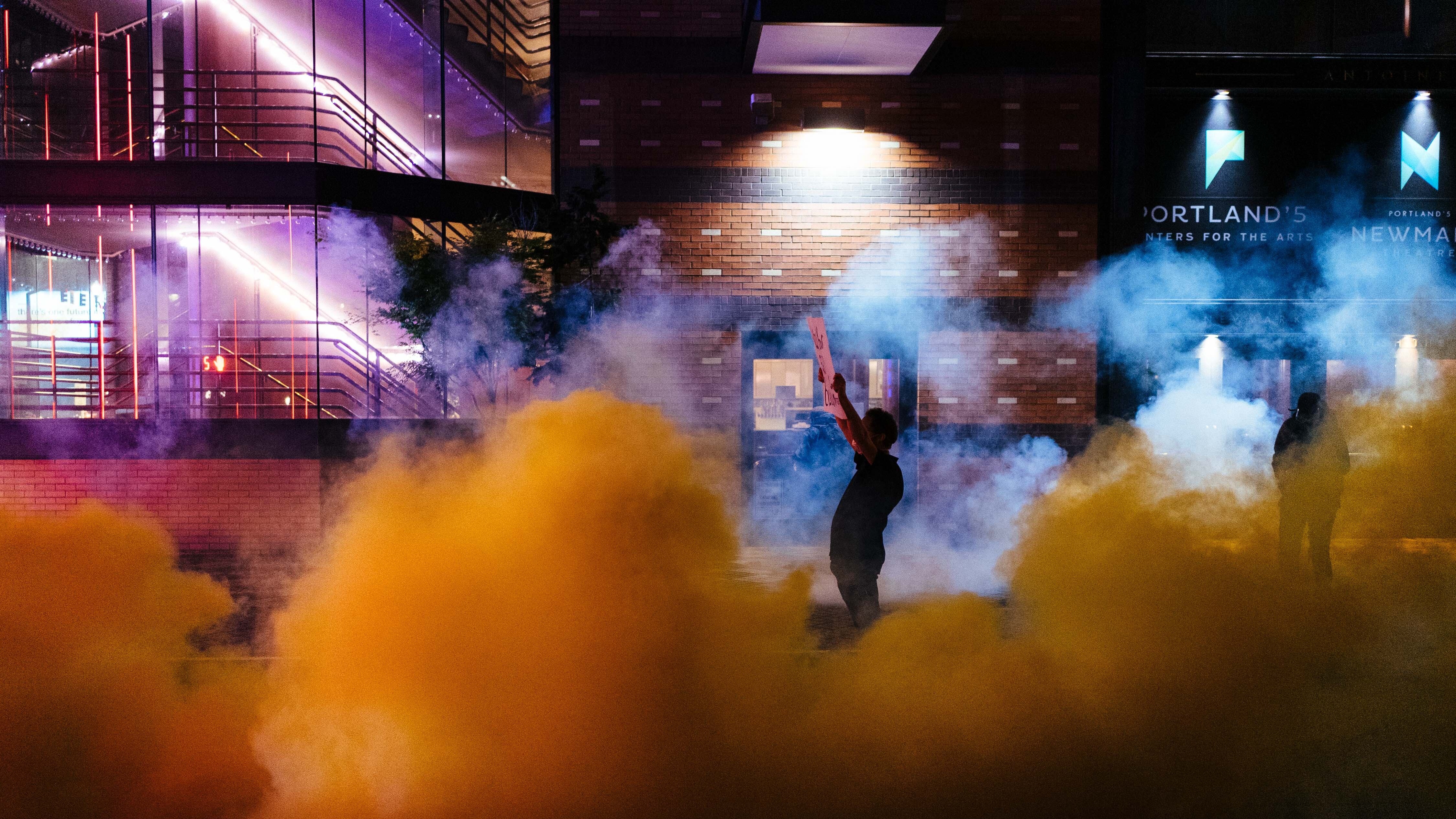After 16 straight nights, a familiar pattern from protesters and law enforcement has emerged as part of an ongoing national uprising against police brutality toward black Americans and other people of color.
Portland's uprising has been like a tale of two protests: One group gathers outside Revolution Hall, followed by a march and speeches, and another group congregates at the fence outside the downtown Multnomah County Justice Center, where they come face to face with police in full riot gear.
That continued with some variations on Saturday.
Protesters outside of the Justice Center climbed onto and at points attempted to dismantle the surrounding fence. And like past evenings, Portland police dispersed the crowd with smoke bombs, flash grenades and rubber bullets after warnings to stop tampering with the fence. (Unlike earlier in the protests, police did not use tear gas.)

Unlike at past protests outside of Revolution Hall, last night's eastside protesters were not without conflict. Police said one or more people attending the Revolution Hall rally smashed the windows and stabbed the tires of a vehicle on Saturday that became entangled in the march. (The Portland Police Bureau arrested 10 people on Friday; arrest numbers for Saturday have not been released yet.)
Also on Saturday, activist groups on Twitter announced plans to create a Portland Autonomous Zone, much like the Capital Hill Autonomous Zone in Seattle, in which protesters would occupy a cordoned-off portion of the city without a police presence.
But organizers nixed the plan around 9 pm Saturday, saying it was promoted pre-maturely before they could prepare fully.
#PDX #alerta #pdxalert #pdxdefense #portland #portlandprotest #pdxprotest #blmpdx PLEASE SHARE THIS AS FAR AS YOU CAN. SAVE IT AND text it to your friends. Ask them to post it too! pic.twitter.com/9KC1Z8wLga
— Lilith (they/them) (@lilithxsinclair) June 14, 2020
Besides a tent with snacks and water propped up near Lownsdale Square on Saturday night, there was no indication of an occupation taking hold.
The downtown demonstrators instead marched into the West Hills, up Vista Avenue towards Jackson Street, PPB said in a news release.
"Some members of the group threw mortars and fireworks at the officers," the bureau said. "There was a high level of concern about the risk of fire to occupied residences posed by commercial grade fireworks being detonated."
Police dispersed the crowd and redirected them toward downtown.
Saturday also included another example of police action against the media.
By 10:45 pm, police declared the protest an unlawful assembly. An hour later, at 11:45, police bull-rushed the crowd, and a PPB officer appears to have shoved Portland Tribune reporter Zane Sparling into a wall after he told them he was a member of the press.
"I don't give a shit. Go!" the officer can be heard responding in the video.
Portland Police charge protesters tonight.
— Zane Sparling (@PDXzane) June 14, 2020
Officer: Move!
Me: MEDIA!
Officer: I don’t give a shit! Go!
I was shoved into the wall, then hit in the heel by some sort of crowd control munition. I’m fine pic.twitter.com/daPElkEb6J
By 2 am Sunday morning, nearly all protesters had been cleared, PPB said.
Oregon National Guard members were not assisting the police Saturday, the bureau added. (PPB declined to answer questions about when the Oregon National Guard last assisted on a night of protests.)
Gov. Kate Brown, in a June 10 letter, rescinded her deployment of the Oregon National Guard, her office said on Sunday in response to questions. "The Oregon National Guard was deployed for two nights, June 1 and June 2, to assist Portland law enforcement in a support role only, and they have not been called in to assist law enforcement since then," said Brown spokeswoman Liz Merah.
Contrary to an account circulating on social media, the federal building downtown was not being guarded by the Oregon National Guard, a spokesman for the Federal Protective Service also said.
"At this time, the Federal Protective Service is not currently working with the Oregon National Guard in the protection of the federal building in the Portland area; we are continuing to work closely with our state, local and other federal agency law enforcement partners in our response and protection measures," Federal Protective Service spokesman Robert Sperling said.


